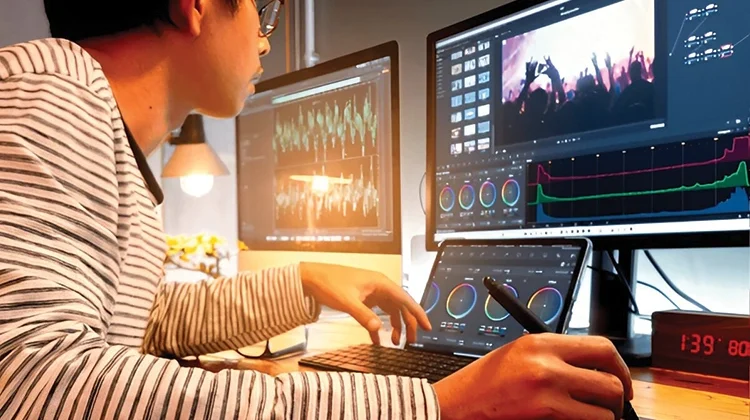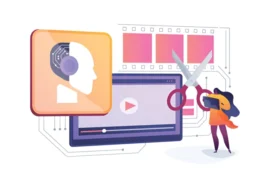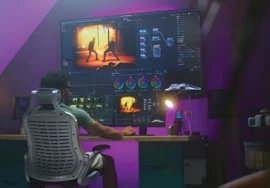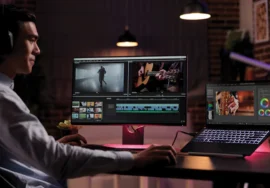
The Different Video Editing Services and When to Use Them
Video editing is an essential part of the modern world, whether you’re a content creator, a business owner, or someone who wants to capture and share their memories. There are many video editing services available, each with its unique benefits and drawbacks. In this blog post, we’ll discuss the various video editing services and when it’s best to use each one.
Basic Video Editing
Basic video editing involves cutting and trimming footage, adding transitions, and adjusting basic audio levels. This editing is suitable for simple projects, such as personal videos, social media content, and short promotional videos.
When to use basic video editing:
- You have a simple project that doesn’t need complex editing techniques.
- You’re on a tight budget and need a cost-effective solution.
- You’re new to video editing and want to start with the basics.
Advanced Video Editing
Advanced video editing involves more complex techniques, such as color grading, green screen effects, and motion graphics. This editing is suitable for professional projects, such as films, commercials, and corporate videos.
When to use advanced video editing:
- You have a complex project that requires advanced editing techniques.
- You’re a professional video editor or filmmaker.
- You’re willing to invest in high-quality editing software and hardware.
Specialized Video Editing
Specialized video editing involves techniques that are specific to a particular industry or niche. For example, there are specialized video editing services for sports, weddings, and real estate.
When to use specialized video editing:
- You have a project that requires specialized editing techniques.
- You want to work with an editor who has experience in your industry or niche.
Online Video Editing
Online video editing services allow you to edit your videos on your web browser. These services are often free or offer a basic tier of service for free.
When to use online video editing:
- You want to edit your videos on the go.
- You don’t have access to video editing software on your computer.
- You’re on a tight budget.
Professional Video Editing
Professional video editing services are provided by freelance editors or video production companies. These services can be expensive, but they can also offer high-quality results.
When to use professional video editing:
- You have a high-stakes project that requires a professional touch.
- You want to outsource the video editing process to free up your time.
- You’re willing to invest in a professional video editing service to get the best possible results.
Choosing the Right Video Editing Service
When choosing a video editing service, it’s important to consider your budget, the complexity of your project, and the desired outcome. Here are these added factors to keep in mind:
- Experience and ability: Look for an editor or company with experience in your industry or niche.
- Portfolio: Ask to see examples of the editor’s or company’s earlier work.
- Communication: Make sure you can communicate with the editor or company.
- Turnaround time: Consider how quickly you need the video editing to be completed.
- Pricing: Get quotes from several different editors or companies to compare prices.
By carefully considering these factors, you can choose the video editing service that is right for you and your project.
Additional Tips for Choosing the Right Video Editing Service
Beyond the factors mentioned above, here are some extra tips to consider when selecting a video editing service:
1. Consider the Software and Hardware:
- Software Compatibility: Ensure the editor is proficient in the software you prefer (e.g., Adobe Premiere Pro, Final Cut Pro, DaVinci Resolve).
- Hardware Requirements: If you have specific hardware requirements (e.g., high-resolution monitors, powerful GPUs), verify that the editor can accommodate them.
2. Ask About Their Workflow:
- Project Management: Understand their project management process, including deadlines, communication channels, and revision rounds.
- Collaboration: If you’re working with a team, inquire about their collaboration tools and methods.
3. Check Reviews and Testimonials:
- Online Reputation: Look for reviews and testimonials from previous clients to gauge their satisfaction and experience.
- Case Studies: Ask for case studies or examples of similar projects the editor has worked on.
4. Request a Test Edit:
- Trial Run: If possible, request a small test edit to assess their skills and compatibility with your vision.
5. Discuss Copyright and Licensing:
- Ownership: Clarify who owns the final edited video and its copyright.
- Usage Rights: Understand the licensing terms for using the video in various contexts.
6. Factor in Post-Production Services:
- Additional Needs: If you require additional post-production services (e.g., color grading, sound design, animation), inquire about their capabilities or recommendations.
7. Consider Your Location and Time Zone:
- Proximity: If you need in-person meetings or a local presence, consider the editor’s location.
- Time Zone Differences: Ensure there’s minimal time zone overlap for effective communication and collaboration.
By carefully considering these additional factors, you can make an even more informed decision when selecting a video editing service that aligns with your project’s specific needs and expectations.
Conclusion
Video editing is an essential part of the modern world, and there are many different types of video editing services available to choose from. By understanding the different types of video editing services and when to use each one, you can make informed decisions about your video editing projects.





